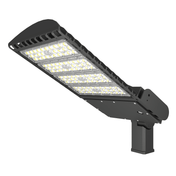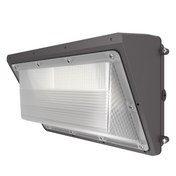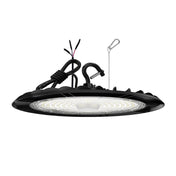LED Street Lights: Redefining Roadway Illumination with Safety and Efficiency at the Core
In the realm of urban infrastructure, roadway illumination plays a pivotal role in ensuring public safety, facilitating smooth traffic flow, and enhancing the quality of nighttime environments. Traditional lighting solutions like high-pressure sodium (HPS) lamps have long dominated the market but fall short in terms of energy efficiency, lifespan, and light quality. Today, LED street lights have emerged as the gold standard, offering high lumen output, exceptional durability, and eco-friendly performance that aligns with modern sustainability goals. This article delves into the key dimensions that make LED street lights the preferred choice for municipalities, transportation departments, and urban planners worldwide.
1. High Lumen Output: Illuminating Roads for Enhanced Safety
Safety is the foremost priority in roadway lighting, and it starts with sufficient brightness. LED street lights are engineered to deliver high lumen roadway illumination—a measure of the total amount of visible light emitted by a source—without compromising on energy consumption. Unlike HPS lamps, which lose up to 30% of their lumen output over time (a phenomenon known as lumen depreciation), LED fixtures maintain consistent brightness for decades. For instance, a 150W LED street light can produce over 20,000 lumens, equivalent to a 400W HPS lamp, ensuring uniform light distribution across roads, sidewalks, and intersections.
Uniform illumination is critical for reducing glare and shadow zones, which are major contributors to nighttime accidents.
LED street lights feature advanced optical designs, such as adjustable lenses and reflectors, that direct light precisely where it’s needed. This targeted lighting not only improves visibility for drivers, cyclists, and pedestrians but also minimizes light pollution—a growing concern in urban areas that disrupts ecosystems and human sleep patterns. Studies have shown that well-lit roadways with LED fixtures can reduce nighttime accident rates by up to 30%, making them a life-saving investment for communities.
2. Energy Efficiency: Cutting Costs and Reducing Carbon Footprint
In an era of rising energy costs and climate change awareness, energy efficiency is a non-negotiable factor for public lighting projects. LED street lights are unmatched in this regard, boasting an energy conversion rate of over 90%—meaning nearly all electrical energy is converted into light, rather than heat (as is the case with traditional lamps). This translates to significant energy savings: municipalities can reduce their street lighting electricity bills by 50-70% after switching to LED technology.
For example, a mid-sized city with 10,000 street lights consuming 100W each (traditional HPS) would spend approximately $1.2 million annually on electricity. Replacing these with 50W LED fixtures would cut the annual cost to $480,000—a savings of $720,000 per year. Over the 10-15 year lifespan of LED lights, these savings can reach millions, funds that can be redirected to other critical urban infrastructure projects. Additionally, lower energy consumption reduces reliance on fossil fuels, helping cities meet their carbon reduction targets and contribute to a greener future.
3. Durability and Low Maintenance: Long-Term Reliability for Public Spaces
Public lighting systems are exposed to harsh environmental conditions—extreme temperatures, rain, snow, dust, and even vandalism. LED street lights are built to withstand these challenges, thanks to their solid-state construction (no fragile filaments or glass bulbs) and robust housing materials like aluminum alloy and polycarbonate. Most LED fixtures come with an IP65 or higher ingress protection rating, meaning they are dust-tight and resistant to low-pressure water jets, ensuring reliable performance in all weather conditions.
Another key advantage is their long lifespan. LED street lights typically last 50,000-100,000 hours, compared to just 10,000-20,000 hours for HPS lamps. This reduces the frequency of maintenance and replacement, which is not only costly but also disruptive to traffic and public safety. For municipalities, fewer truck rolls, labor costs, and bulb replacements translate to long-term operational savings. In remote areas or highways where access is difficult, the low-maintenance nature of LED lights is even more valuable, minimizing downtime and ensuring continuous illumination.
4. Smart Integration: Future-Ready Lighting for Smart Cities
As cities evolve into smart ecosystems, LED street lights are becoming an integral part of the Internet of Things (IoT) infrastructure. Modern LED fixtures can be equipped with smart controls, such as dimming sensors, motion detectors, and wireless connectivity, allowing for remote monitoring and management. For example, lights can be dimmed during low-traffic hours (saving additional energy) and brightened instantly when motion is detected. Municipalities can also use centralized platforms to track performance, identify faulty fixtures, and schedule maintenance—all in real time.
Smart LED street lights also serve as a foundation for other smart city applications, such as traffic monitoring, environmental sensing (air quality, temperature), and public Wi-Fi hotspots. This multi-functional capability makes LED lighting a versatile investment that supports the long-term digital transformation of urban areas.
Conclusion: The Clear Choice for Modern Roadway Illumination
LED street lights represent a paradigm shift in roadway illumination, combining high lumen output for safety, exceptional energy efficiency for cost savings, durable construction for reliability, and smart integration for future readiness. Whether for urban streets, suburban neighborhoods, highways, or industrial areas, these fixtures deliver tangible benefits that traditional lighting solutions simply cannot match. As more municipalities recognize the value of LED technology, the transition to high-performance, sustainable street lighting is accelerating—paving the way for safer, greener, and smarter cities.
Investing in LED street lights is not just a upgrade to lighting infrastructure; it’s a commitment to improving public safety, reducing environmental impact, and building more resilient communities for generations to come.








